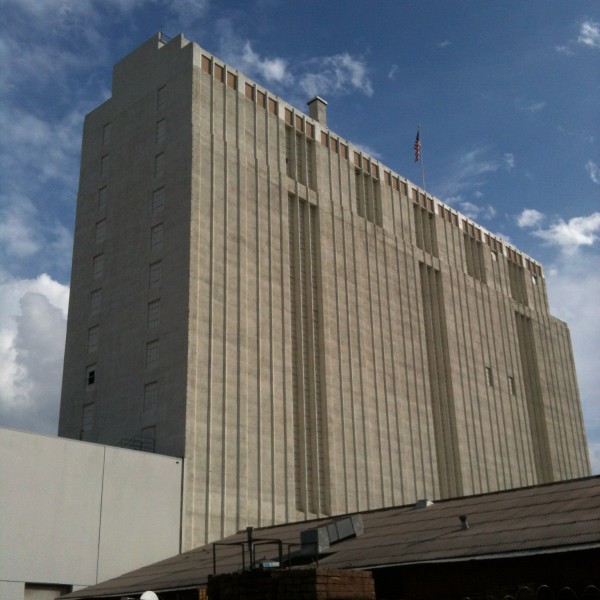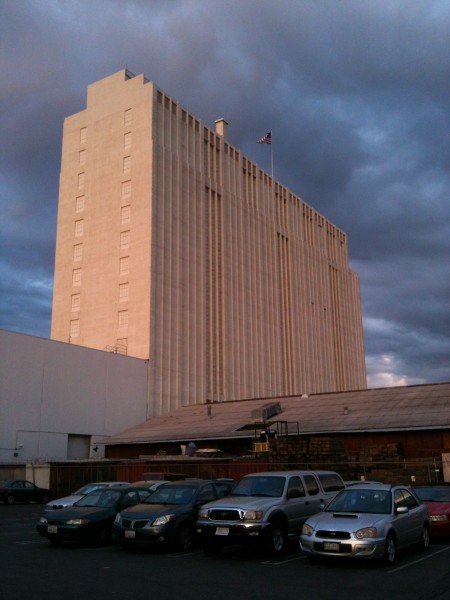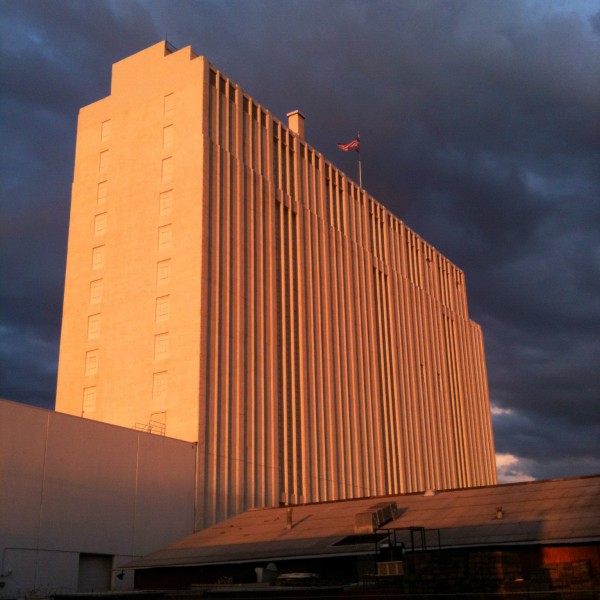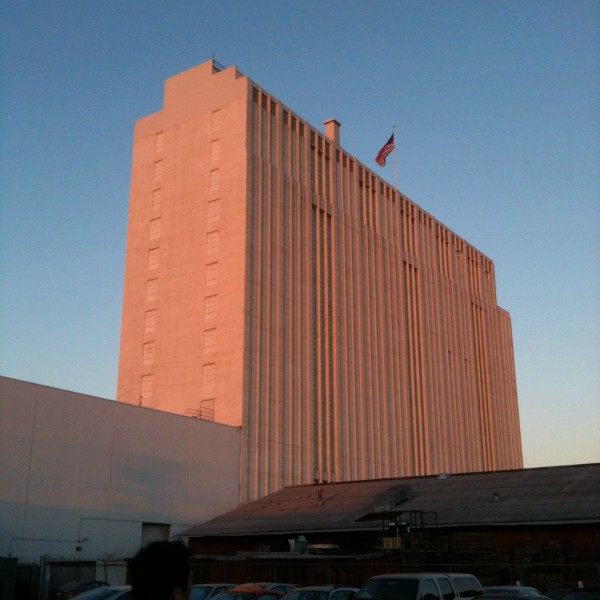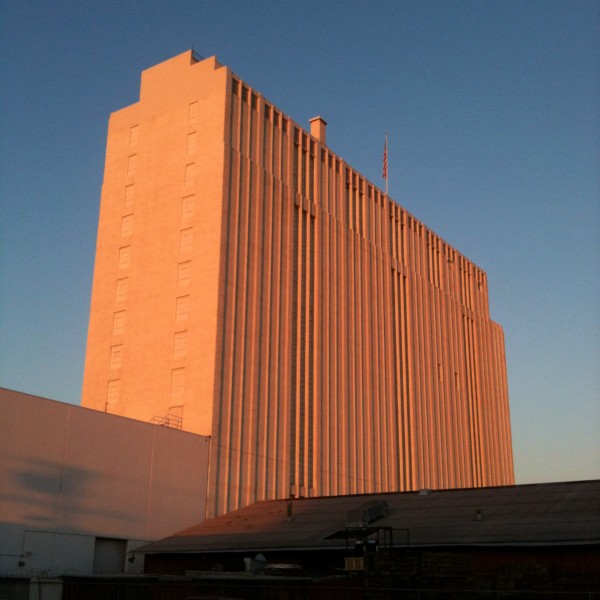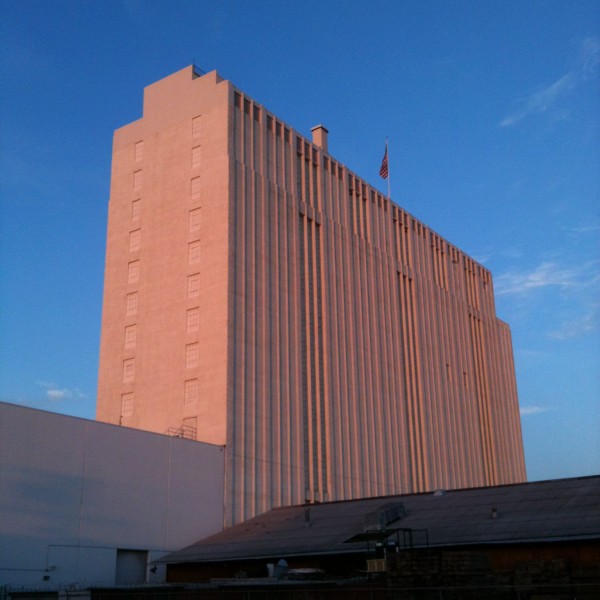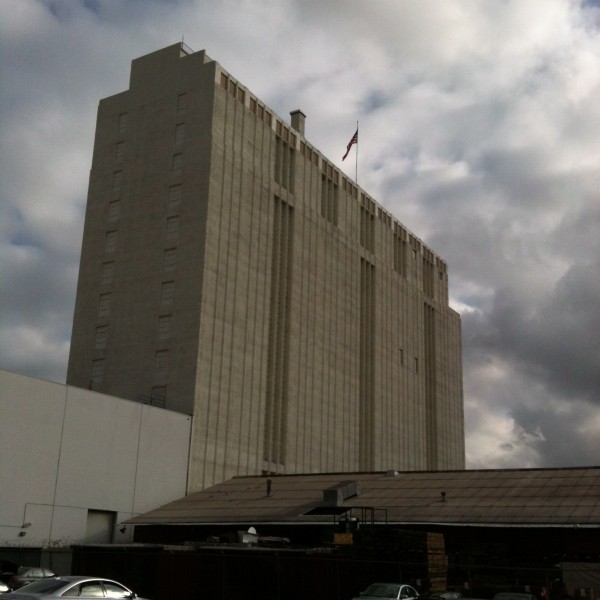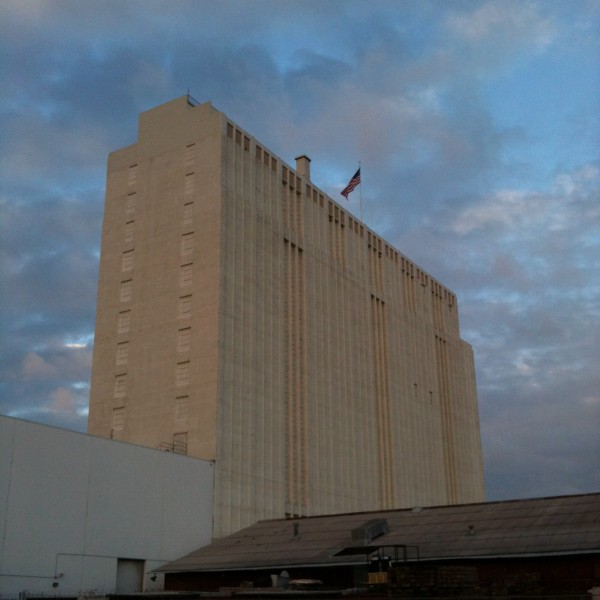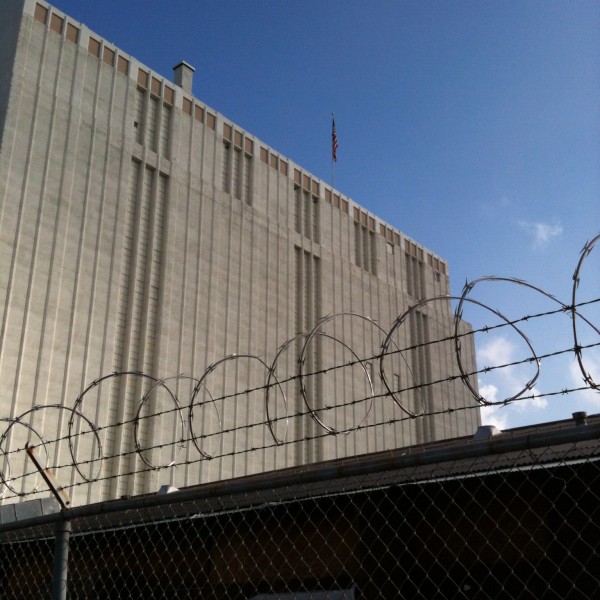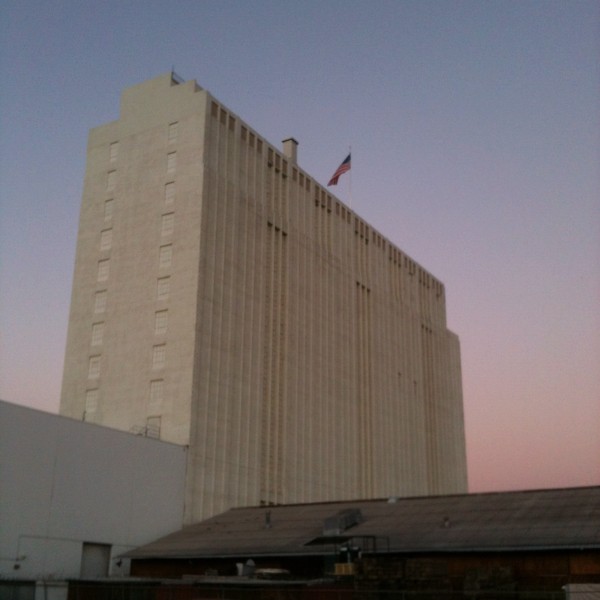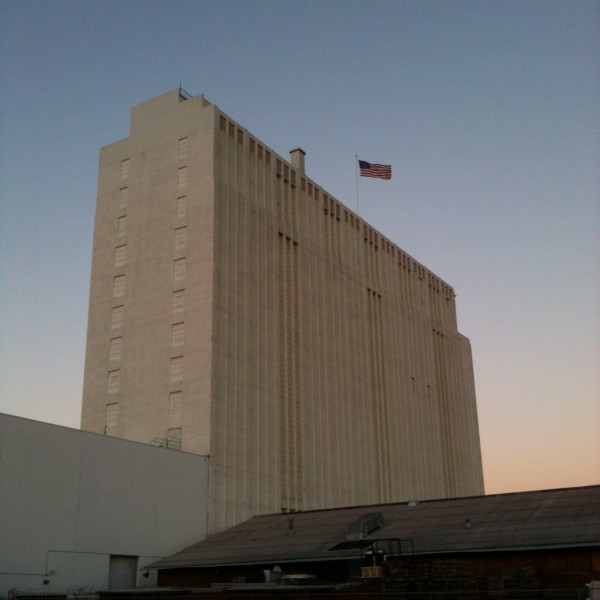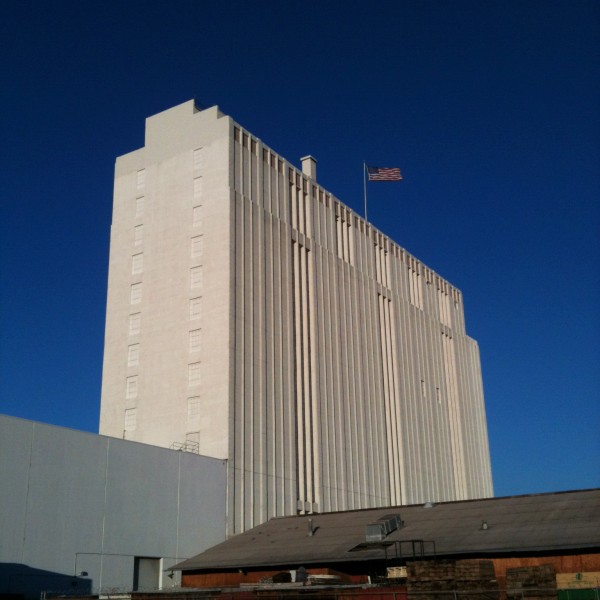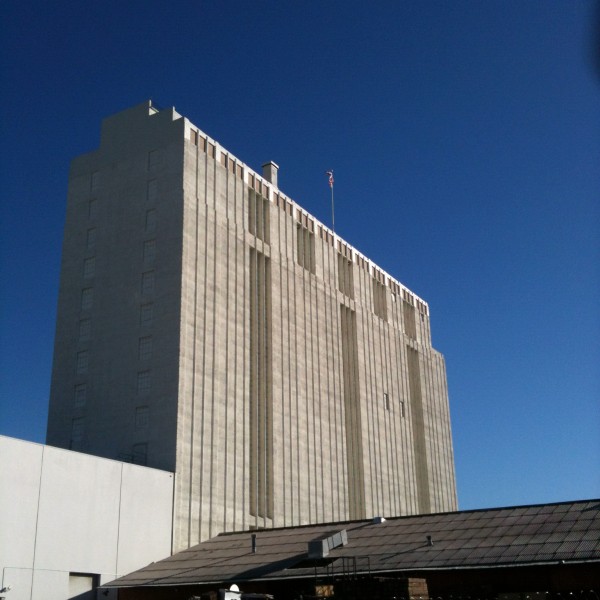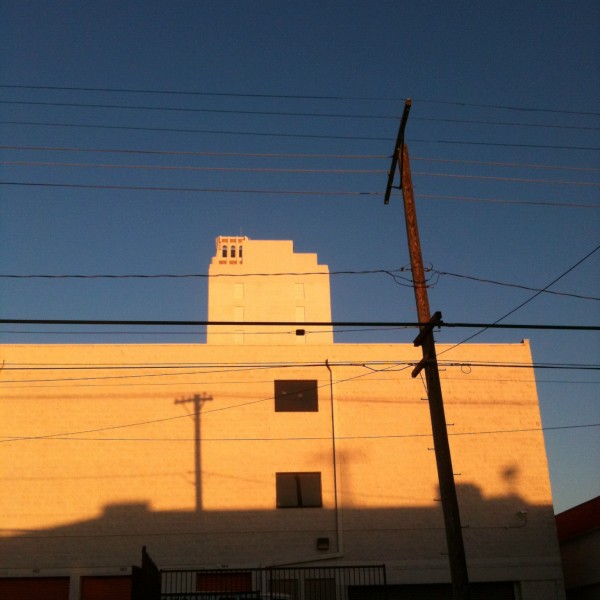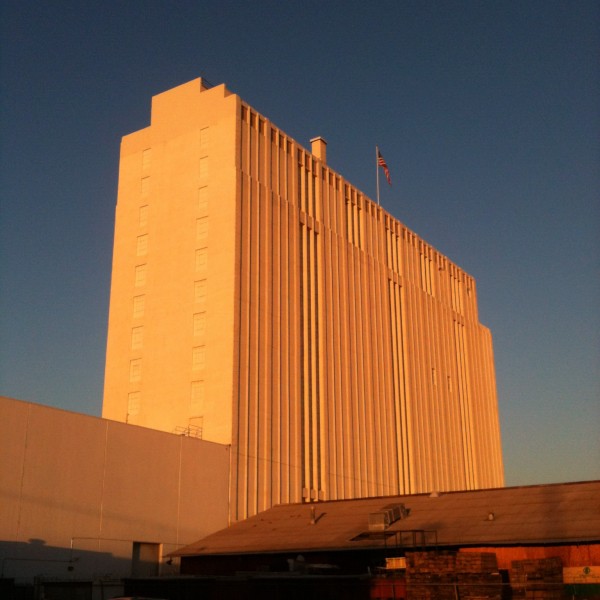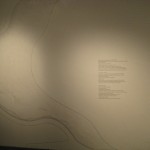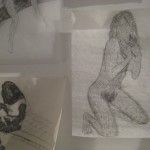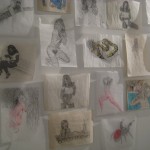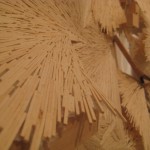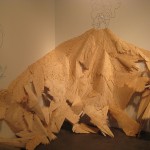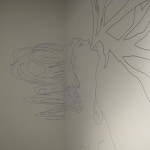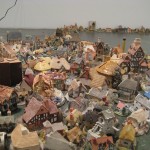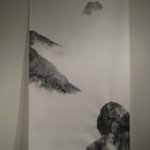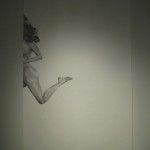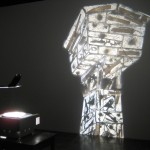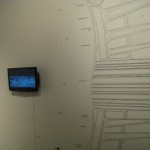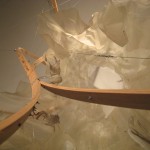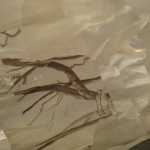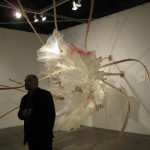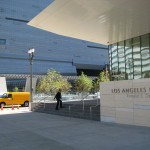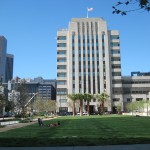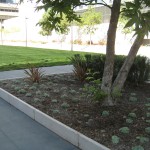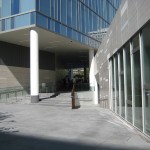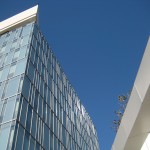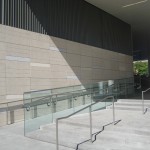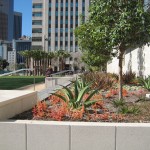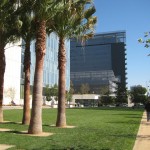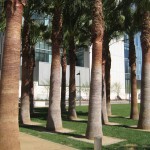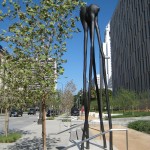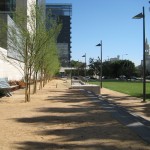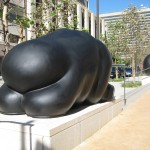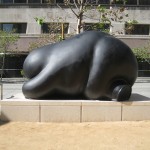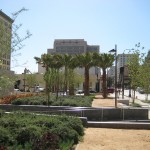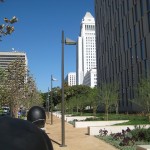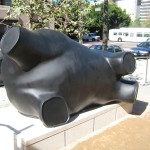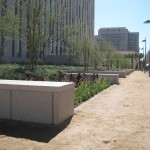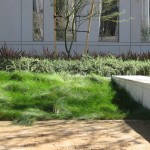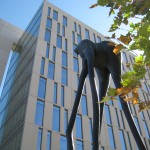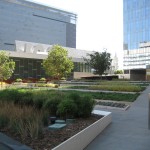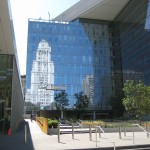I have been taking photos of this storage building in Hollywood just about every weeknight lately. I park in a lot that gets this 3/4 view of it, and there is just something about this tall, vaguely classic building that fascinates me. The thin ribs that catch the setting sun and cast vertical shadows, the percentage of window to blank wall (making it obvious it’s storage, but still a bit visually jarring). The way the finish changes with the color of the setting sun. I love the detail of the American flag up on top – letting you know the relative wind speed and direction in each photo. Everyone once in a while some mundane, background building in LA catches my attention for awhile…
Anyway, I will keep shooting it. These are all with my cell phone but I shoot a few with film now and again too. Here is what I have shot so far:
I finally edited the video footage I shot of this past year’s Vivarium installation at the Southern California Institute of Architecture. The Vivarium is an installation by Matter Management exploring biology, technology and mythology in a complex architectural and multi-media environment. I developed the sound design for the project, which involved inventing a system to monitor the biology in the black pyramid and to use that data to both generate and modify audio signals. The sound included audio amplified from the biology itself, sounds I had previously recorded, and sounds generated by software using the data captured. I developed the data system using Max/MSP.
For more information on my sound design process, see my previous post Sound from Diagrams and The Vivarium.

Bruce Nauman show at Hamburger Bahnhof Berlin
I’m in Berlin till the end of August, as part of the Takt artists residency.
I learned that the German idiom Ich verstehe nur Bahnhof which means I didn’t understand anything except for the word Bahnhof, (train station) amounts to the English idiom It’s all Greek to me. There are certainly many days when pretty much the only German word I understand all day is Bahnhof.
Hamburger (…er) Bahnhof, former train station and now major contemporary art museum, was such a pleasure to see. Something happens to me when I go out to see art in places like this in Berlin, and I have to be careful because I am easily swept up in the musuemy glitz of it all, but I get a good feeling. It’s a feeling that completely goes against my more suspicious media literacy instincts. I sometimes get the feeling that the museum cares a lot about the work they’re showing, and that the artist deserves such resplendent spaces to let the work shine. I get a feeling that the work is a precious thing, and not in a negative way. I feel like an art rock star fan, and it feels good to feel this way.
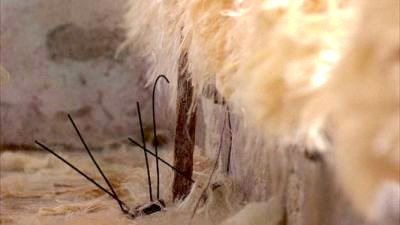
Zarina Bhimji Waiting 2007 still. From film installation in "Who knows tomorrow" at Hamburger Bahnhof, Berlin
But… as I saw more of the Friedrich Christian Flick Collection, even though I was pleasantly overwhelmed to see so many famous contemporary works presented together, many pieces I’ve only seen in books, I was a little miffed to see so few women artists. This collection, (even though this was only some of it, its being presented over 6 years) seemed limited in social and cultural scope. I also learned more about the Friedrich Christian Flick Collection and the controversy surrounding it. His grandfather Friedrich Flick’s steel company was a major weapons supplier to the Nazi Regime. This article by interesting blogger Ivar Hagendoorn covers the first show of his collection at Hamburger Banhof, in 2004, and goes into the controversy a little more . Honestly, as a baby to Berlin and German cultural understanding, all I can think is, at least the money used for evil is now being used for good. What a simplistic thought. Ich verstehe nur bahnhof.
My disappointment at the scope of Flick’s collection was healed a bit by the Who knows tomorrow piece Waiting, by Ugandan artist Zarina Bhimji. The work is a very large projection of 35mm film representing the workings of a sisal factory in Kenya. The piercing beauty of the images illuminate the inhumane history of the industry. Who knows tomorrow is a Berlin citywide exhibition of African artists taking place this summer. Below is from the WKT website.
“At the exhibition Who knows tomorrow, Zarina Bhimji presents her film installation Waiting (2007), for which she studied the facts of this portion of colonial history at length. Although invisible in her film, it still accompanies it like a melodic theme. Zarina Bhimji visited sisal-processing factories near Mombassa, Kenya, some of which originate from colonial times. The beauty of the architecture, the bright, hot light and the simultaneously quasi-paralyzing atmosphere together with the minute movements and the sensitive details of the colors, the walls and the utensils focus the viewer’s gaze on the beauty of the material. Introduced by the Germans to the German colonies in East Africa in the 1890s and still grown on the plantations today, the material is used for ropes, cords, sacks, and carpets.The beauty of the sisal’s texture conjures up memories of hair, lending life to the material that takes on an abstract quality. The artist’s pictures and her sounds address the viewer in a highly emotional manner. The power of Zarina Bhimji’s works is based on their sensuous and seductive imagery, inseparably tied to the tragic and melancholic sadness and burdened by history.”
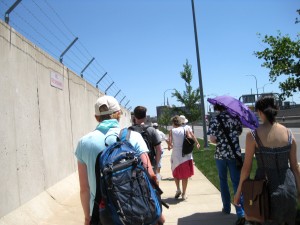
Walking near barbed wire and blast walls. Photo by MN.
A single sidewalk connects all of Logan Airport’s terminals with each other, and with the MBTA’s Airport Station. This sidewalk runs past barbed wire, flower beds, busy sliding doors, and walled-up access roads. Millions of people pass it each year, but few ever stop to notice it.
On Saturday, June 19, 2010, about twenty people joined me for a group exploration of this sidewalk, as part of the Common Boston festival. There were a few architects and urban planners along, as well as a man named Mike who’d grown up near the airport in East Boston; a pilot named Patrick who’d written a book about Logan’s history; some people involved in making public space more walker-friendly; and a number of other interested local residents. MassPort’s spokesperson, Kay, was nice enough to join us as well.
We set out from the MBTA station, and walked about a half mile along a lonely access roads towards the first terminal. Along the way, I gave a brief overview of the airport’s history; Patrick and Kay added a number of details. Kay also passed around internal MassPort maps of the area, which she’d brought along for us to look at. These maps filled in a lot of blank spots for me; when I was doing research for the tour, I was surprised by how many things I couldn’t find out about the airport’s structures.
At the sight of the first pieces of barbed wire, the subject of airport security came up. We talked about blast walls and barbed wire; 9/11; the airport’s history of terrorism, terrorist attempts, and sensational arrests of people who were thought to be terrorists; terrorist watch lists, and the Department of Homeland Security; and the fact that I’d had to provide MassPort with a list of the names of everyone who had signed up for the tour (presumably so that MassPort could do background checks). Opinions on these topics varied.
As we walked, Kay and I told everyone about Logan’s architectural history. Patrick added information about a number of buildings, such as the fact that Terminal E had been extended out, which explained the strange cul-de-sac at the building’s southern end. As a group, we examined and discussed the fenced-off areas for dogs (known as “PetPorts”); the airport’s special trash barrels (known as “bomb barrels”); and the strange open areas in front of the terminals. We also stopped and looked at each terminal building; the consensus was that not many of the buildings seemed designed to be looked at from the street.
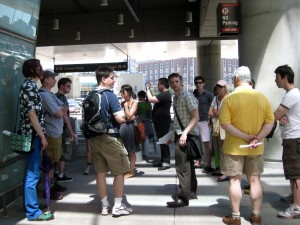
Sidewalk talk. Photo by MN.
In front of Terminal B, we discussed 9/11 again, since two of the hijacked planes had flown out of Logan. I also talked briefly about the airport’s rapid expansion in the 60s and 70s into local residential neighborhoods, parks and nature preserves; as well as the resulting community protests (people laying in front of bulldozers, etc.), and the government’s backlash against them (marshals closing off entire residential areas, etc.). Mike, who’d grown up nearby, followed up my historical lecture with a number of more personal details. Kay then told us about the good that MassPort had done for East Boston in the 80s and 90s—such as paying for soundproofing homes and schools, and funding a park or two.
My tour ended at the front of Terminal A. Kay then volunteered to show everyone the third-floor walkway connecting Terminals A and E, which has a great view of the airport and the city. It also overlooks the 9/11 Memorial. We discussed 9/11 again, and then everyone went their separate ways.
We went over to Sci-Arc last week to check out the current project up in their gallery space, Lenticularis by Hitoshi Abe. The project is a large scale mock-up of a proposal for the Japanese American Cultural and Community Center plaza in Little Tokyo, originally designed by Isamu Noguchi.
Based on a particular type of cloud formation that sometimes appears over mountains (I have seen some great examples out in Anza-Borrego State park), the quasi-functional sculptural object will span over the plaza, providing some shade, some views of a curious object from the street, and reflecting both plaza and sky in the middle. Checking out the 1:7 scale version at Sci-Arc, we couldn’t help but see strong similarities to the work of sculptor Anish Kapoor, and wonder how it will serve to mitigate the summer heat of the plaza, or shelter it from winter rains (part of the brochure from Sci-Arc describes it as a ‘roof’ which responds to the plaza being “too exposed to the climate of Los Angeles”). I am pretty curious as to how it would come off at full scale, crouching over the plaza, and a bit skeptical of it all as anything but a beautiful sculptural object. This unveiling also served as a presentation to the clients, so it remains to be seen whether they are sold on it in this form – if so, I might be able to check it out there myself in a little over a years time.

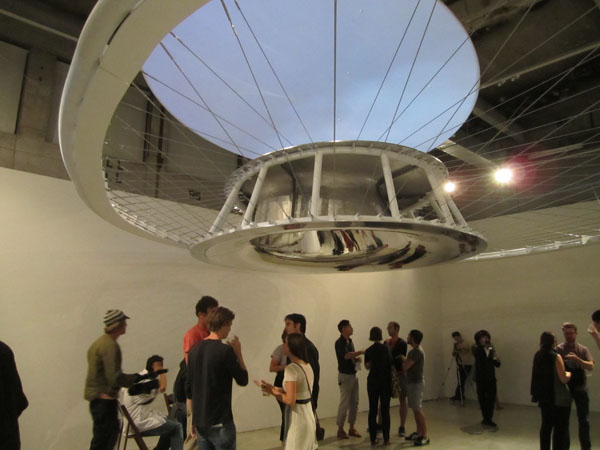
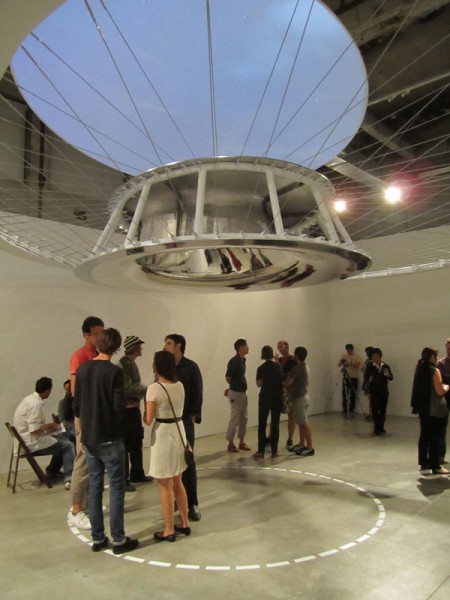
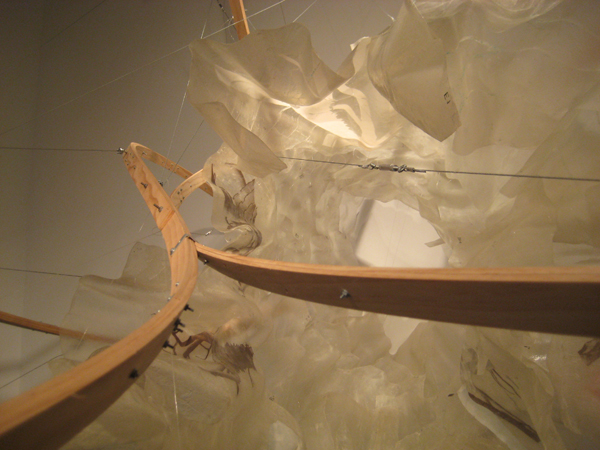
The weekend before Thanksgiving Michele and I went over to one of the old hangars by the Santa Monica Airport to check out the show Cautionary Tales, Feral Structures at Arena 1 gallery. Curated by Berenika Boberksa and presented in several rooms underneath the cavernous roof of the hangar building, the show consisted of works by artists and architects from London and Los Angeles. Each piece employs the cautionary tale as a narrative device which plays out in the feral structures created or proposed in the space.
Our invitation to attend a small gallery talk turned out to be an invitation to participate in a small panel giving the gallery talk… and when we finally got our bearings the conversion kept cycling around the differences between the architects and the artists, and methods each group might employ when working within a gallery context.
As we spoke, my gaze kept returning to the half-constructed or half dismantled volcano across the room. Built haphazardly out of delicately arranged fans of bass wood, and propped up on a scaffold of small timbers, it loomed large above a quaint town composed of kitsch plaster buildings of the sort my mom would put on the mantel around the holidays. I kept wondering weather these townspeople had been building this volcano, and putting themselves in immediate danger through their industriousness; or if they have been trying frantically to take it down in time to save themselves before it blew its top. For some reason the key to this work for me was held in the difference between these two methods, and what each of them might refer to in our own society. I never did decide on an answer, or ask about it, but ended up satisfied with just the question itself, and the state of indeterminacy the work left me with.
Other works included a full-scale proposal by Berenika for an opportunistic retrofit of a housing block, enabling the tenant to architecturally flirt with her neighbors. This large sculptural work took over the main gallery space, and had a line quality reminiscent to me of the restrained yet flowing drawings I had created back in school using only a compass, pencil, and some basic geometry. In the back room was a striking composite analogue projection by Zoe Hodgson (very analogue, using a couple of haphazardly taped up overheard projectors) of a salt tower emerging from the desert. Blockily reminiscent of some medieval Italian creation, its details glowed yet were infused with hairy, creepy things and bits of wood or other materials hinting at a depth beyond the shadow and light on the wall.
The whole show managed to unmistakably come at you from many different places and perspectives, while keeping enough aesthetic and narrative links to stand as a unified body of works – especially when read in the light of the show’s title and curatorial statement.
Since it took me so long to get around writing this post, the show has already been down for quite a while – so you’ll have to be satisfied with checking it out through the photos below.
The artists in the show were: Berenika Boberska, Louise Clarke, Sarah Gillett, Dominique Golden, Zoe Hodgson, Ilaria Mazzoleni and Neil Rollinson. (Sorry I didn’t manage to write down which one belonged to each artist this time)
Rise Industries will be participating in the Arts District Open Studio Tours
This Saturday, December 5th from Noon- 7:00 pm
We are located at 837 Traction Ave. Suite 307, Los Angeles 90013 on the third floor. Traction is diagonally between 4th and Alameda, right next door to SCI-Arc.
Come on by and check out our space and some of our ongoing and recent work. We will be hanging out and perhaps rocking some impromptu sound performances with fellow Rise member Michael Feldman. Mike will also bring some of his recent works for you to check out.
We will have some prints and CDs or DVDs for sale as well.
There will be a shuttle/limo taking people around to the different open studio sites, and there will also be an after party at EAST 3RD STEAKHOUSE from 7pm to 2pm hosted by Edgar Varela and Jerico
LOFTS AND STUDIOS PARTICIPATING:
Traction Avenue Lofts (traction Avenue), Neptune Building (E. 3rd Street), Art Share LA (with group exhibition, holiday Bazaar and children performances 1pm and 5pm, Crazy Gideon store front (Traction Ave), Café Metropol (3rd Street) , 900 Building (1st/Vignes), River Front Loft (Santa Fe Ave), Toy Warehouse Loft (Santa Fe Ave), Barker Block, Toy Factory Lofts – Daniel Lahoda Fine Arts – Biscuit Lofts – 1820 Studios – LACE building (Industrial Street), Factory Place Lofts (Factory Place), EVFA (on Alameda, Seaton Street Lofts (Seaton Street)
For more info see the Facebook event page here or the LADAD website.
A couple of weeks ago I took a nice bike ride from my place up to Sunset Junction to meet a friend for lunch. Very nice ride by the way, I had forgotten Sunset has a bike lane, so I didn’t actually feel like my life was in danger the whole way there. Anyway, on the way home I came down Second Street and came across the nice new pocket park (I guess you’d call it? Lawn?) on the south side of the brand spanking new Los Angeles Police Department headquarters building. The new building is by AECOM (used to be DMJM, but maybe they found that acronym to not be corporate sounding enough?) and is really surprisingly pretty fantastic. I don’t mean surprising for AECOM, corporate joking aside they do some pretty great work and I know some talented designers who work there, but surprising to me that the headquarters for the LAPD could come out just so damn nice and open and become a part of the urban fabric so smoothly. Of course, the biggest thing is the landscaping, and the conscious choice to give the public the south lawn as the aforementioned mini-park. So now there is this great little lawn on Second Street that I totally want to play croquet on, and the rest of the site is well developed and meticulously planted. Maybe the police will take Rise Industries up on a game or two? I will try to overlook the use of decomposed granite on the upper levels instead of concrete in order to defeat skateboarding on those sweet stairs and handrails. I guess all building developers will always hate skateboarders.
I can see that this building is an exercise in trying to revamp LAPD’s image, to give downtown a very open, transparent building with inviting grounds and hope that the message translates to the organization it houses. If so, we will see how that goes. It’s certainly a great gesture. Also on site is a series of dark bronze, abstracted animal-ish sculptures by Peter Shelton which were the topic of some controversy last month. Apparently Chief Bratton hates them… as does LA Times writer Steve Lopez. I was particularly fond of them myself, especially in the context of downtown LA. Head over there and take a look for yourself though, as they read better all lined up as a kind of progression. Then chill out with a book on the new lawn, maybe some good LA Noir like Raymond Chandler or something, right?
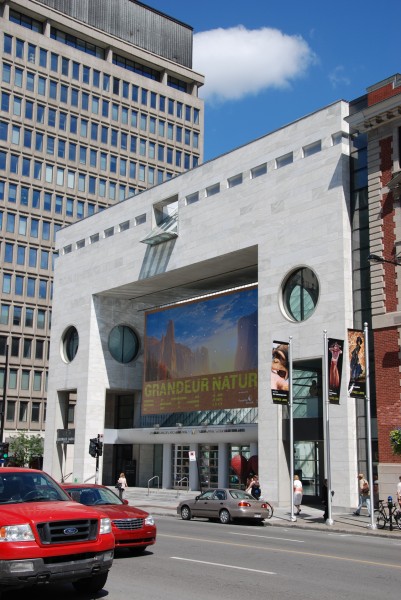
My photo of the Museum of Fine Arts in Montreal has been included in Schmap’s Montreal Guide.
Friday Sept, 18th PARK(ing)* Day LA happens once again around Los Angeles. At Osborn we will set up a park on Brand Blvd. in Glendale to dream of a Bucolic Tomorrow – complete with hammock, meadow and cows. Sort of. If you have the time, explore the various parks scattered around town (It makes a great bike excursion) and stop by ours to say hello. Check PARK(ing) day LA’s website and map for more information and locations.
*I do not understand why designers need to break up words with brackets or parenthesis or inappropriate capitalization and I think it’s gotten out of hand.



